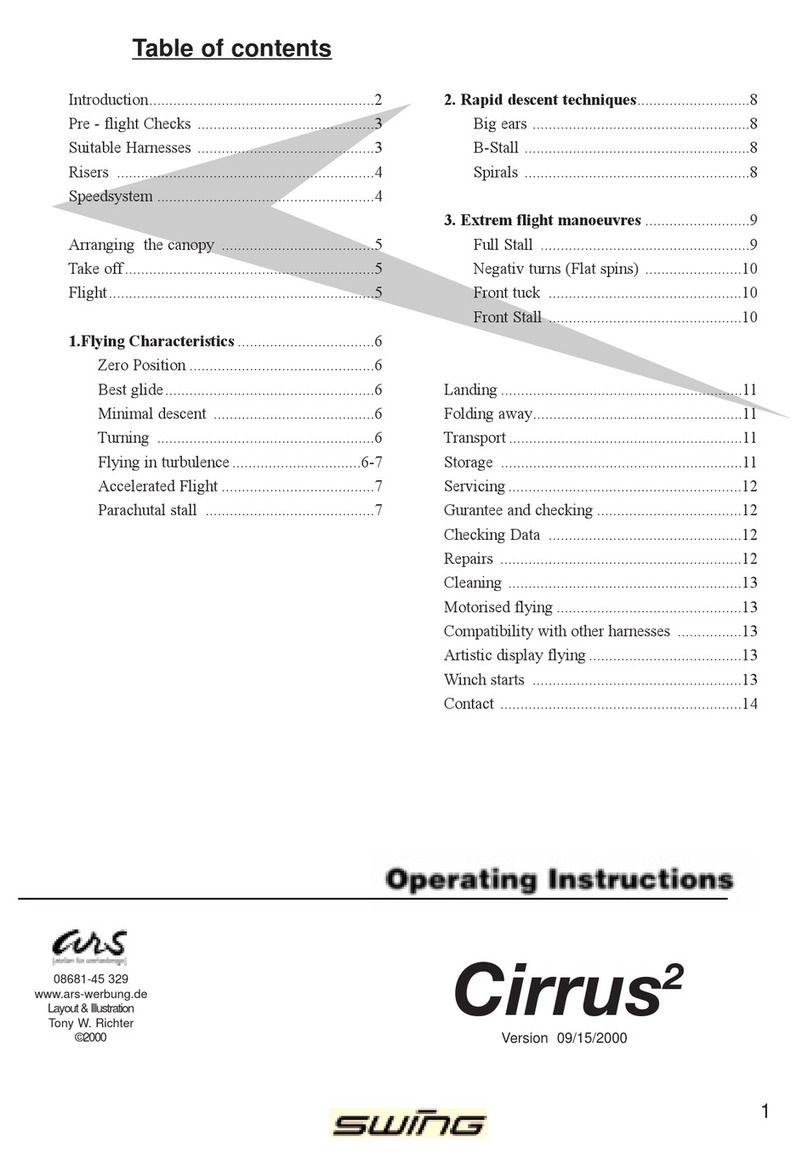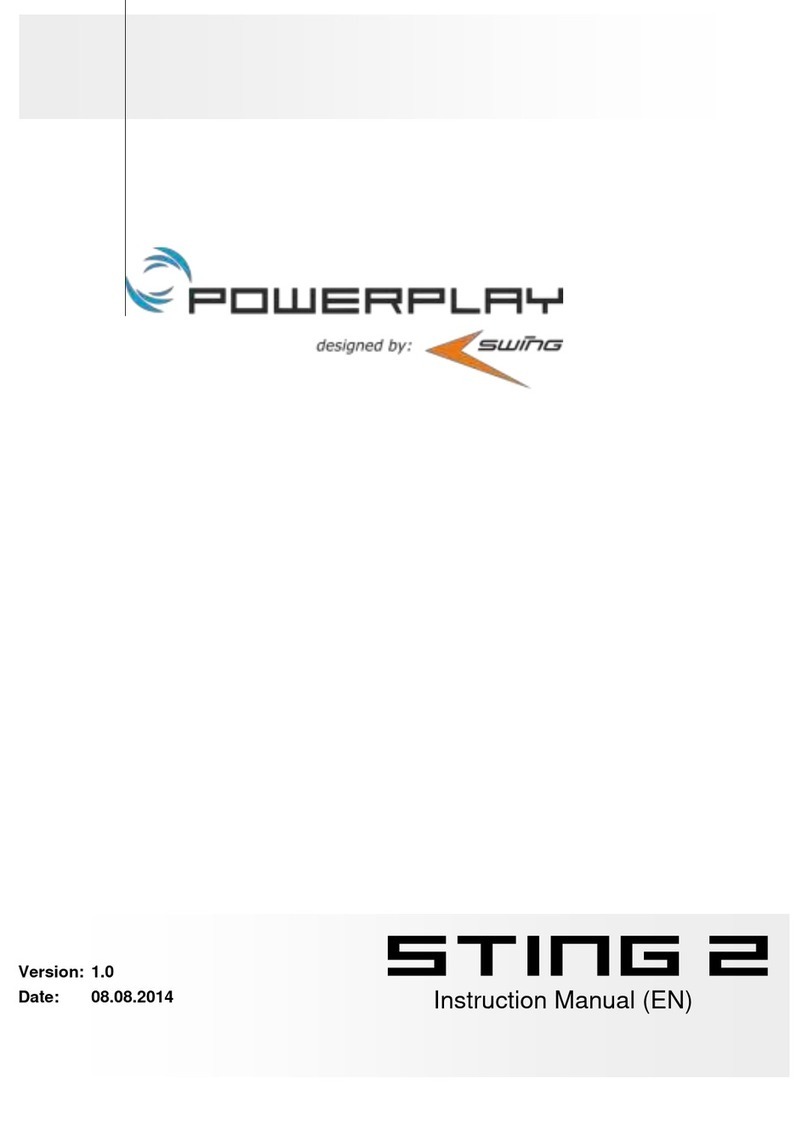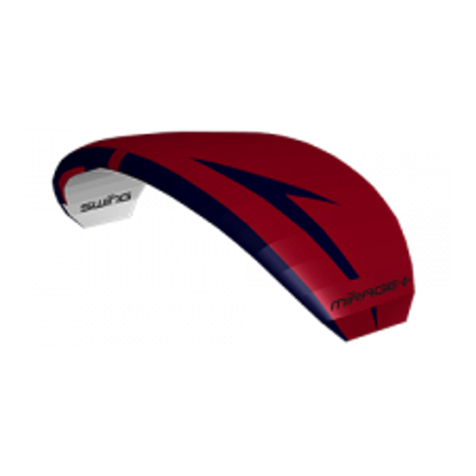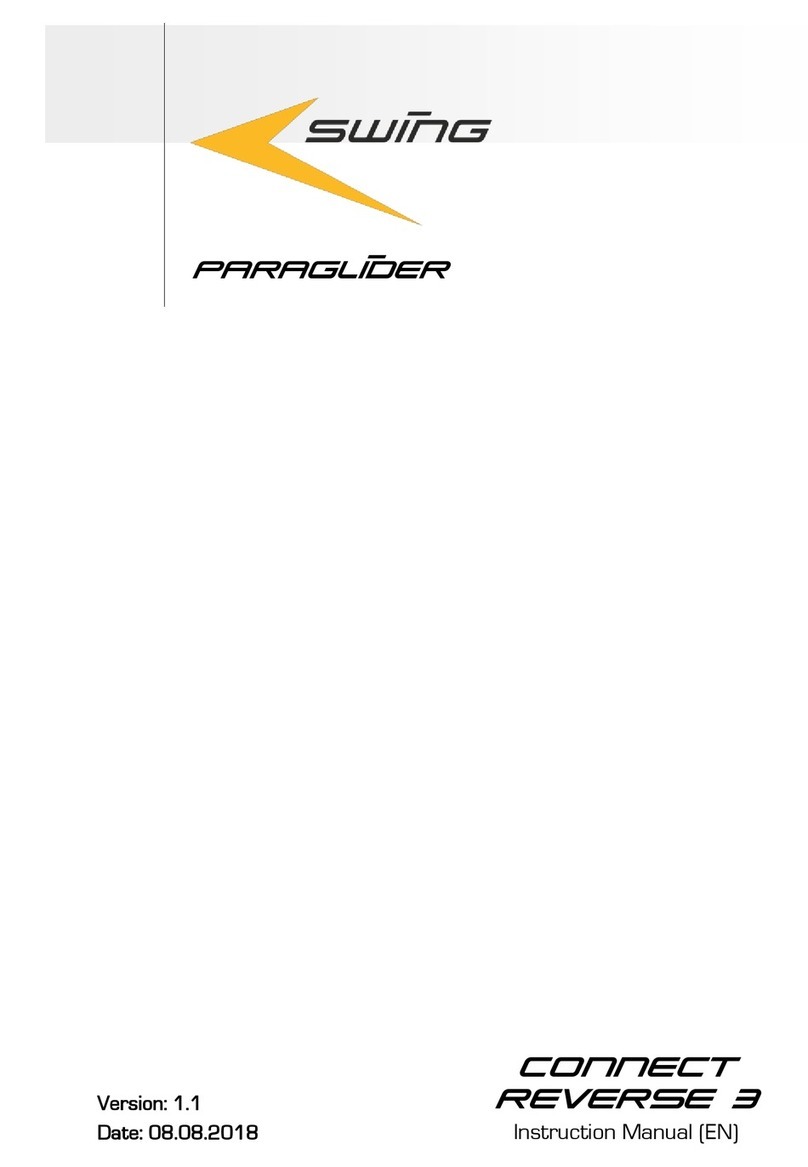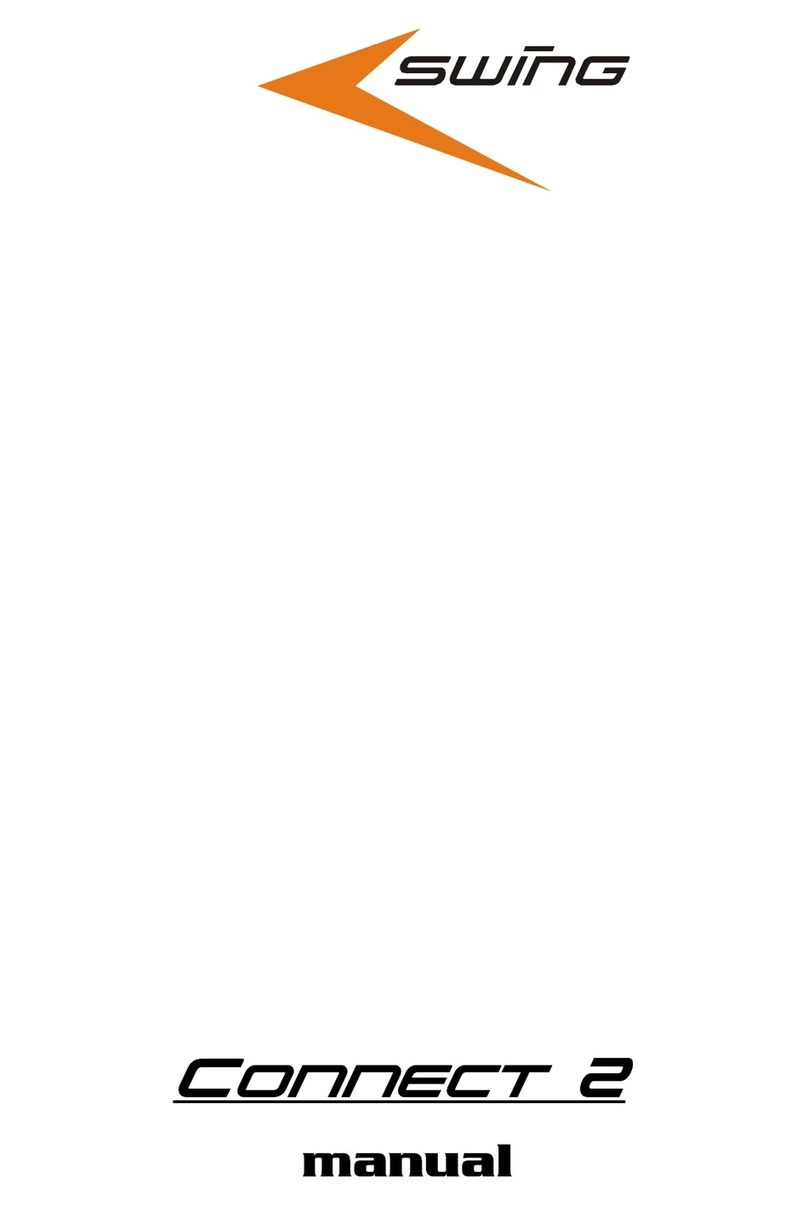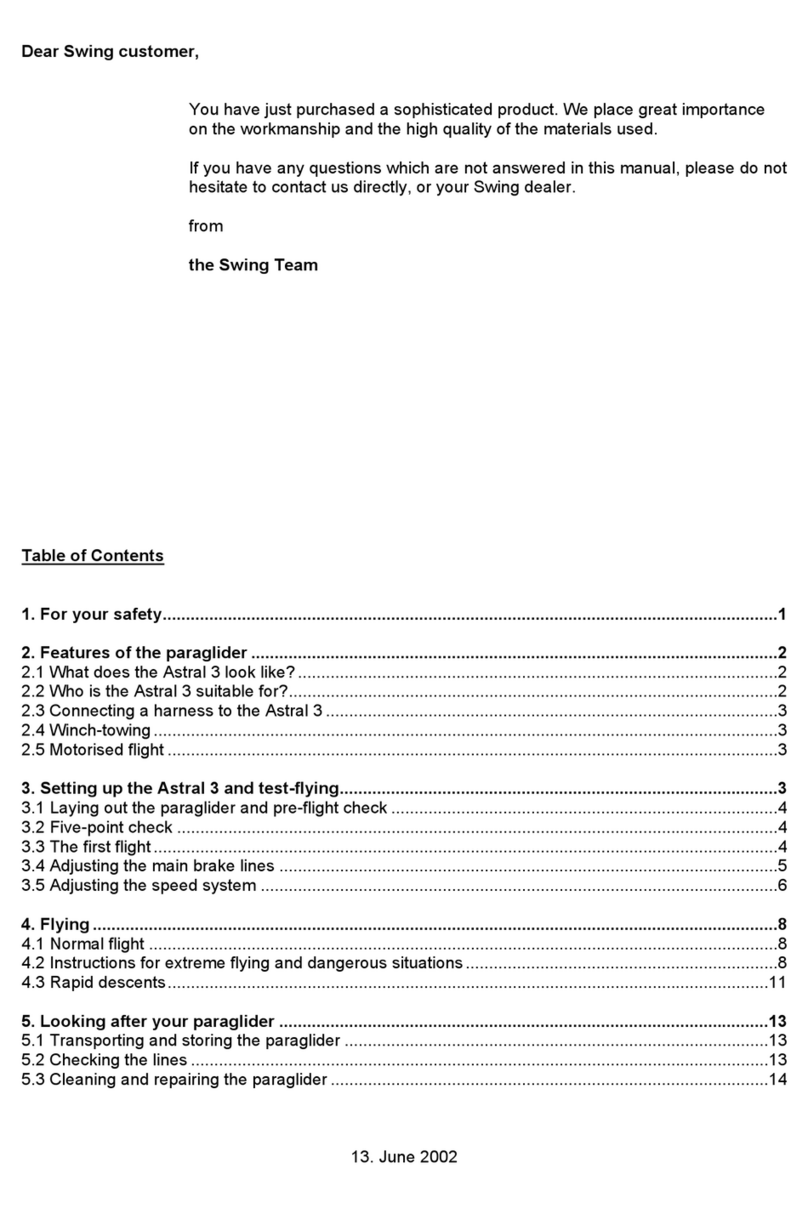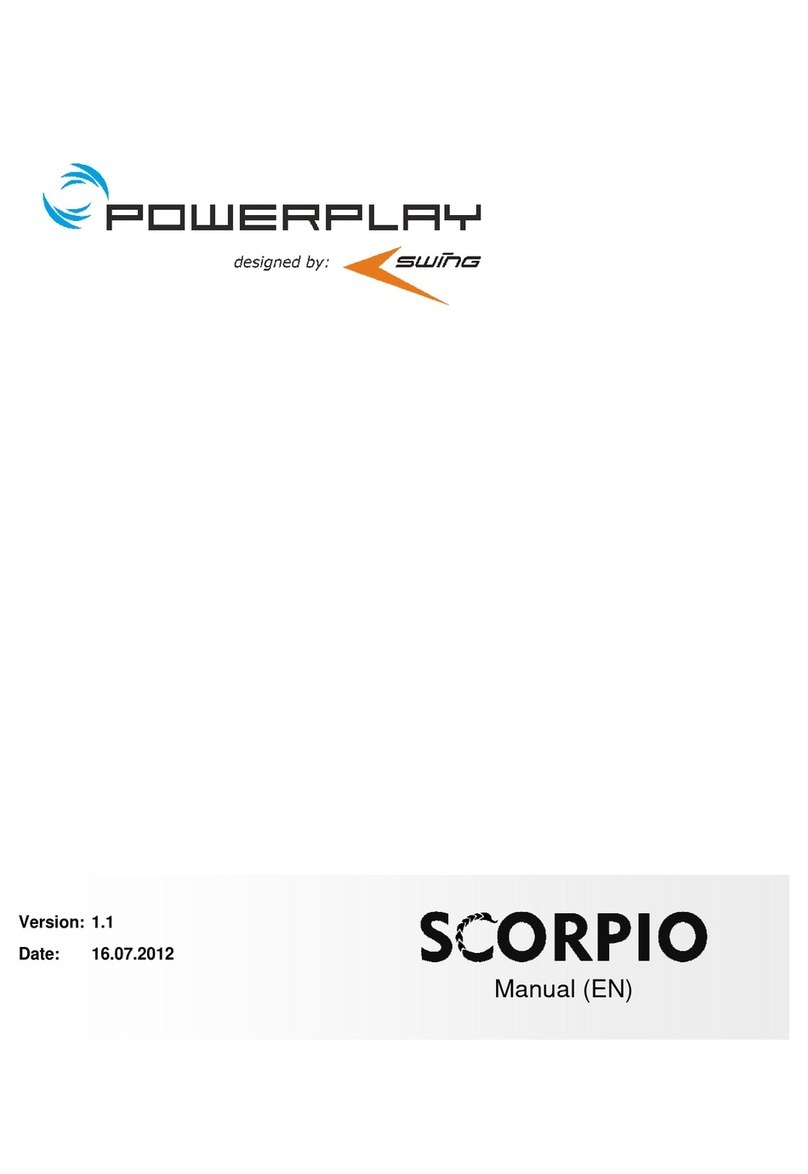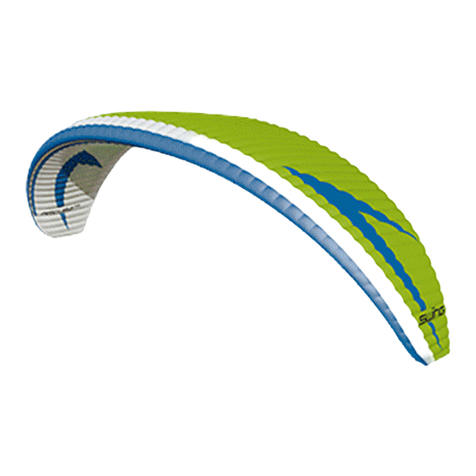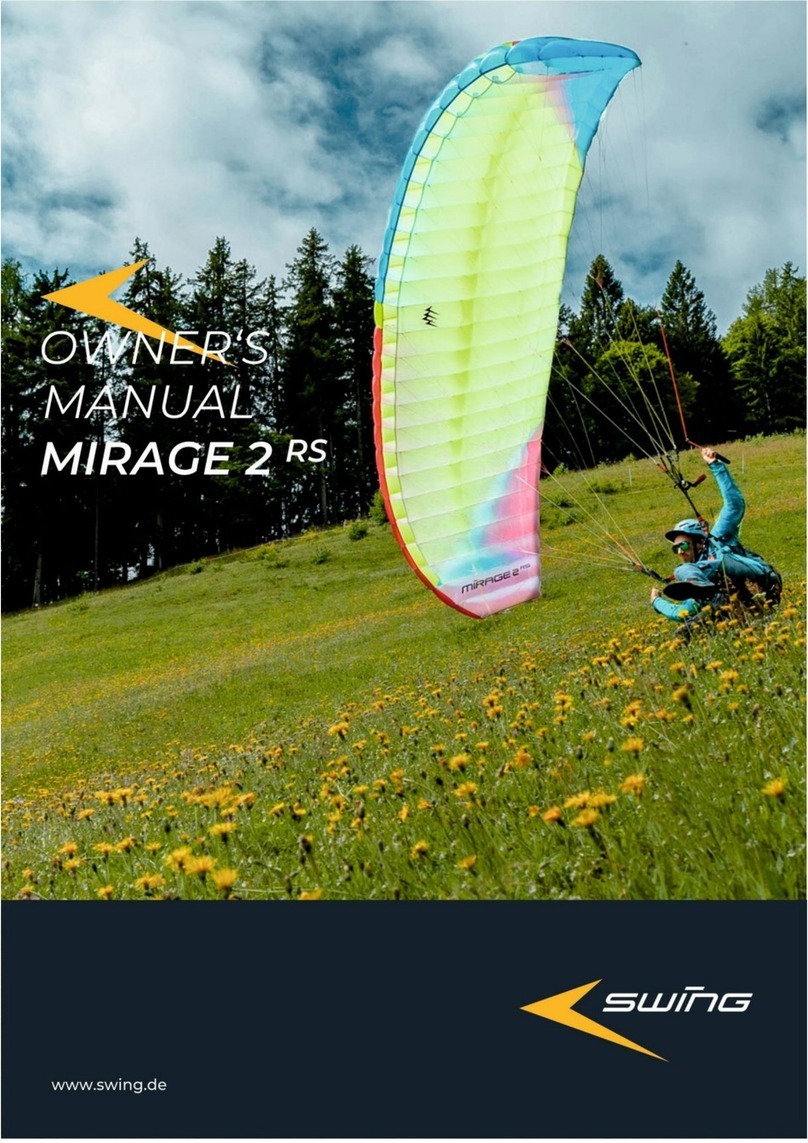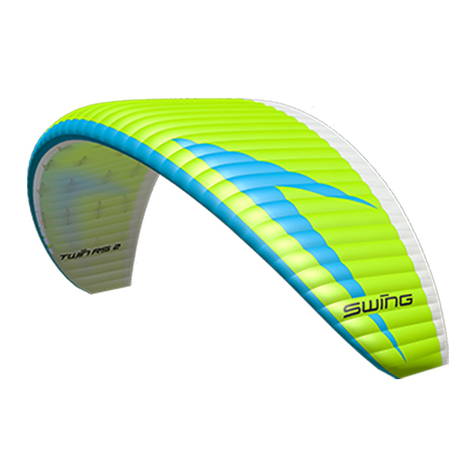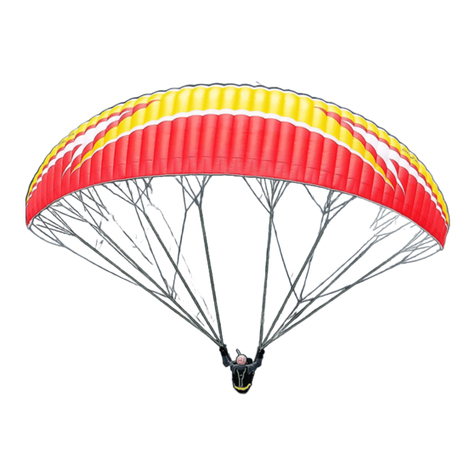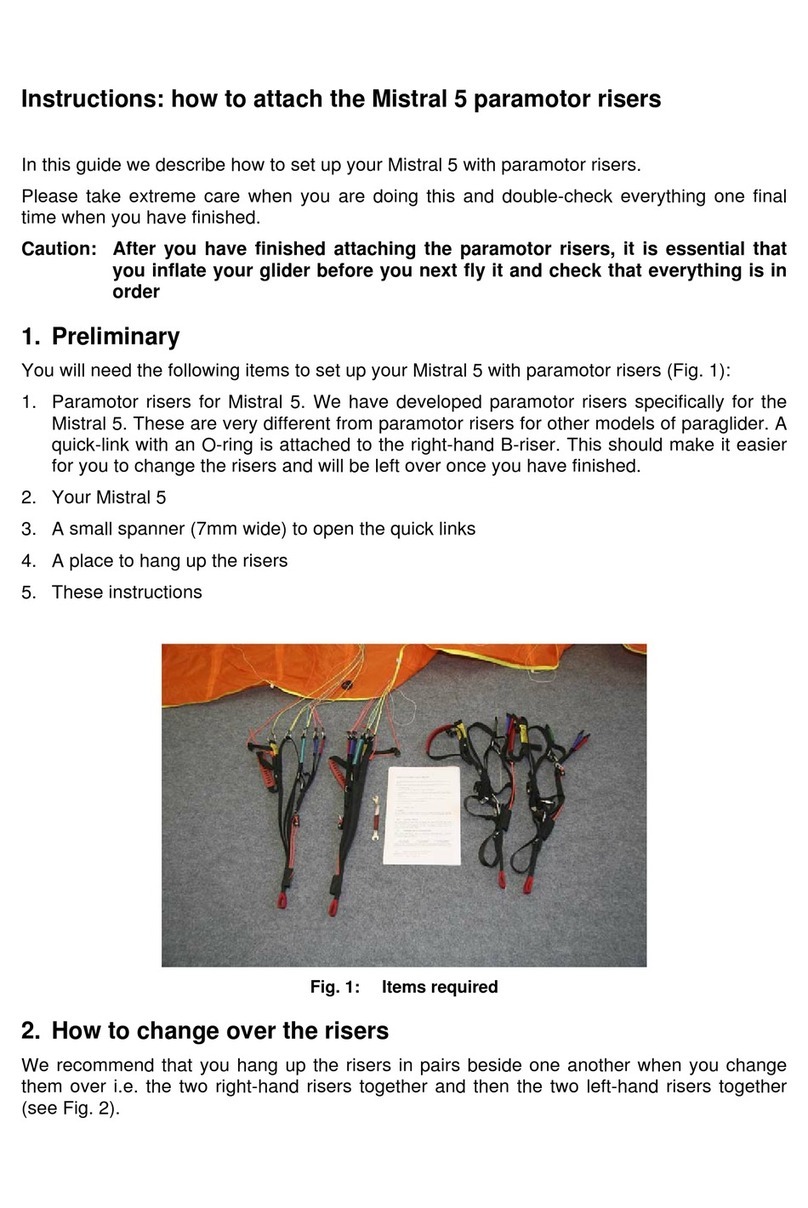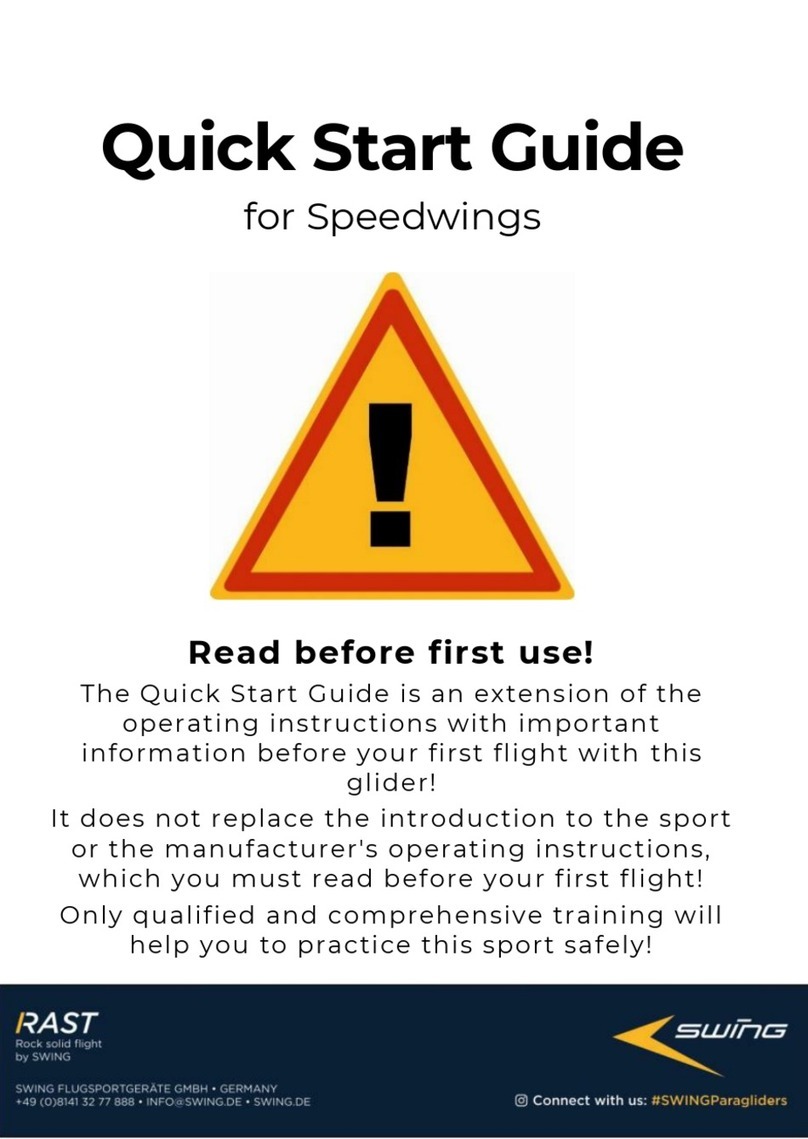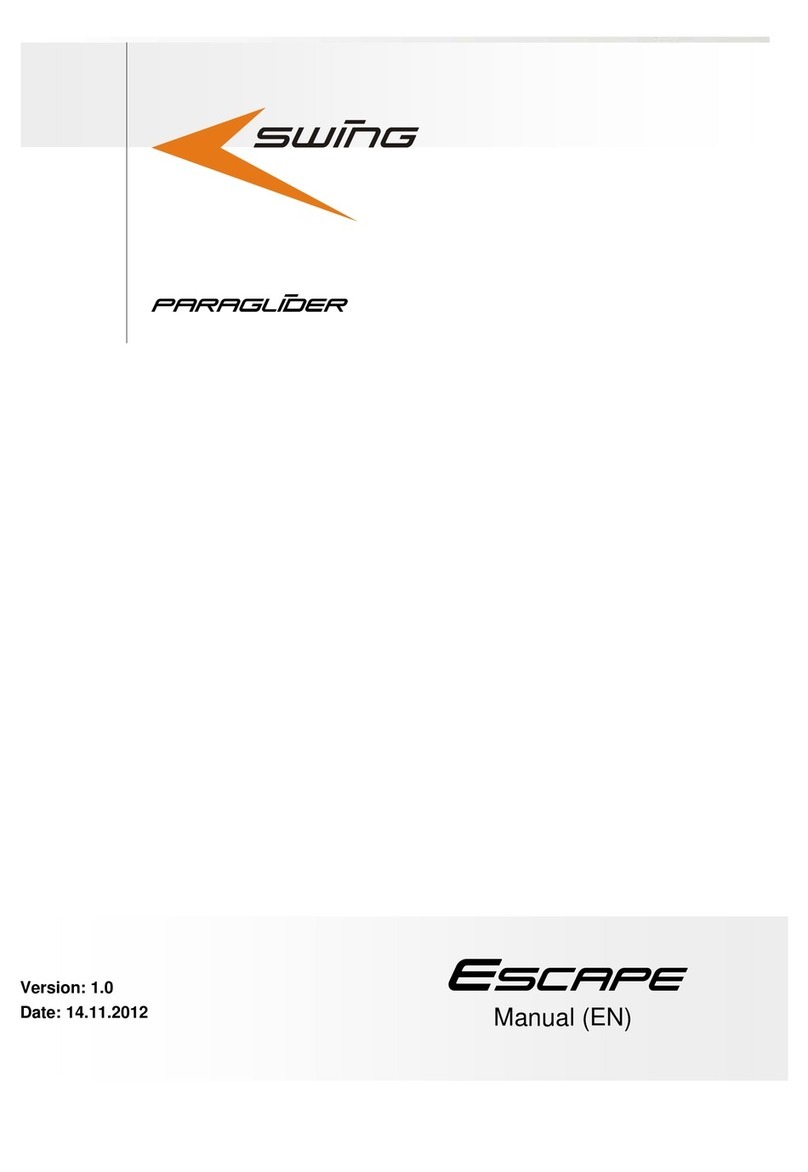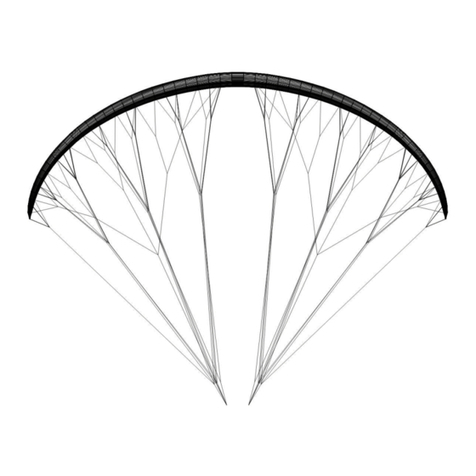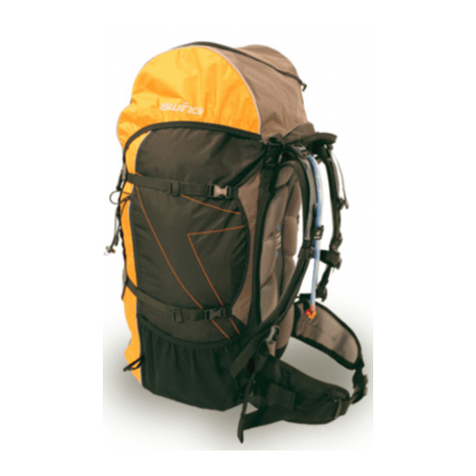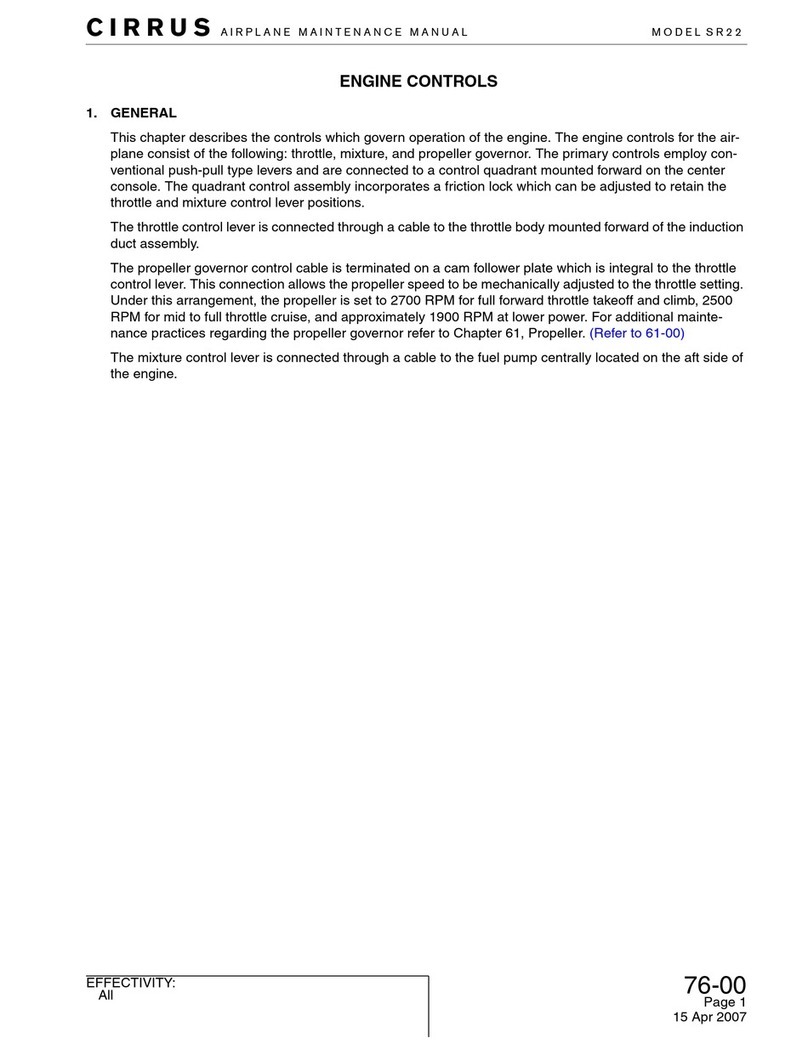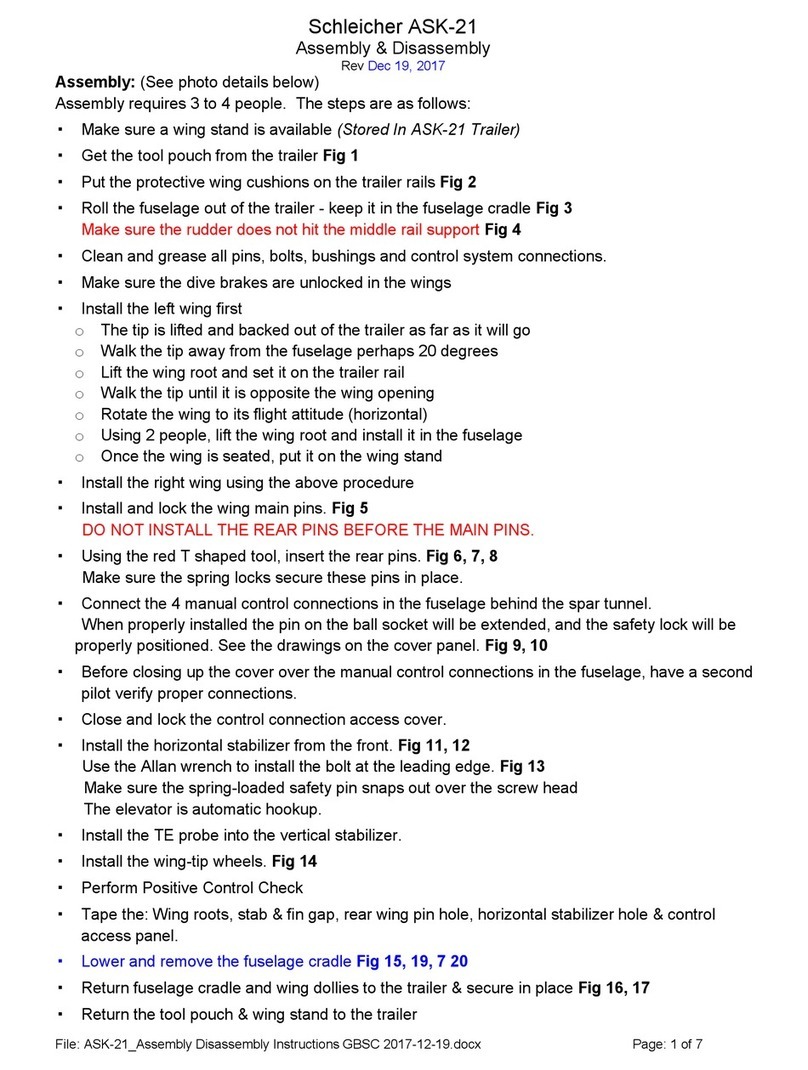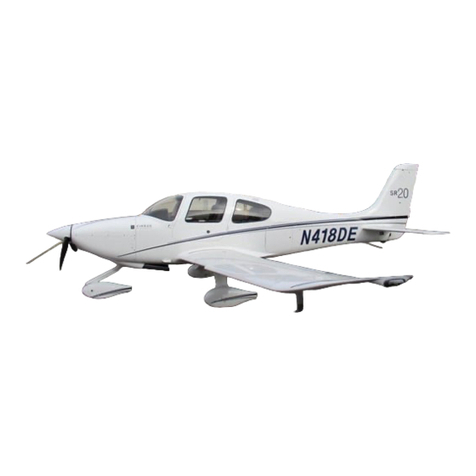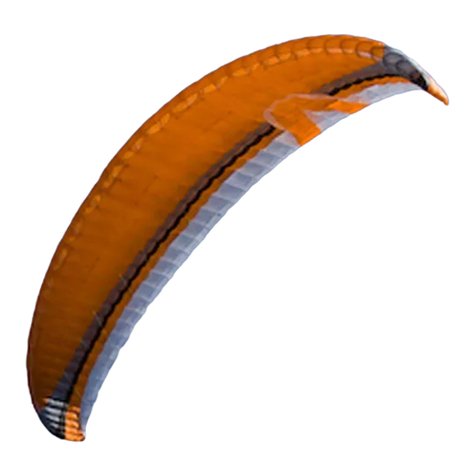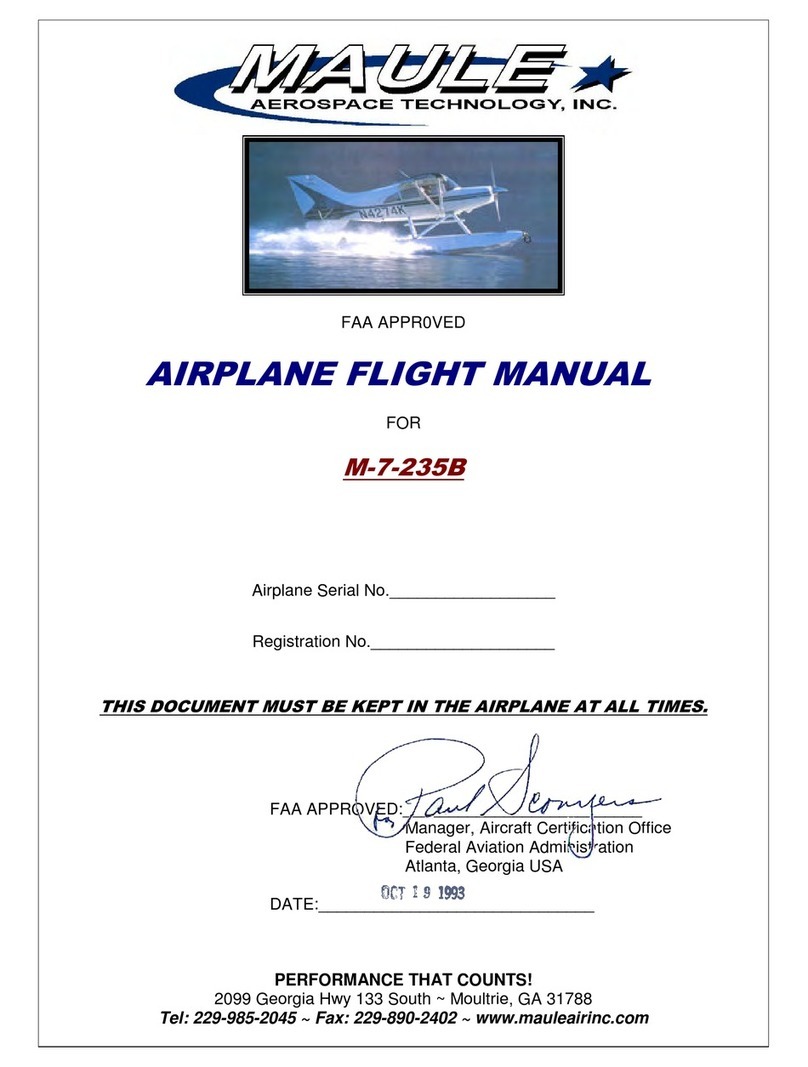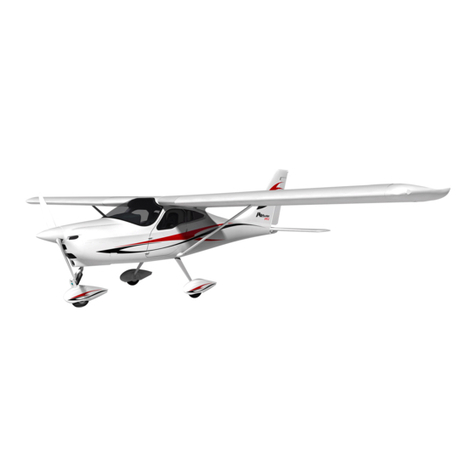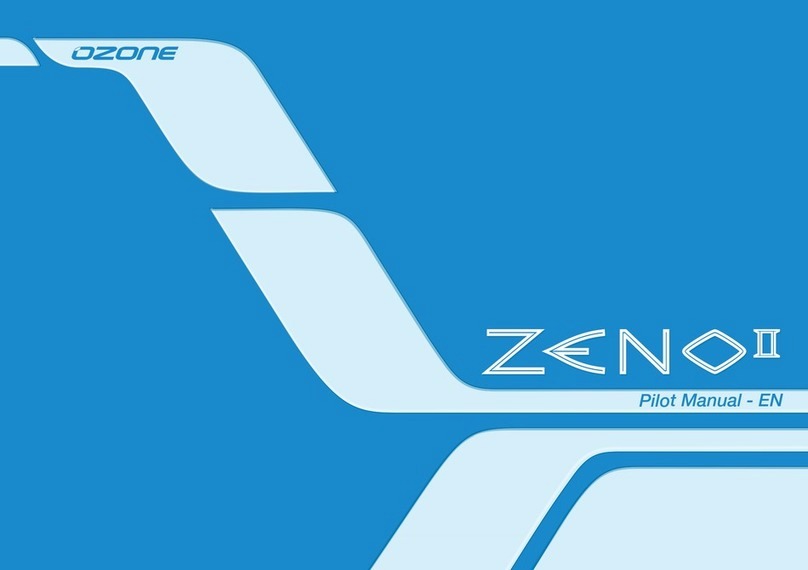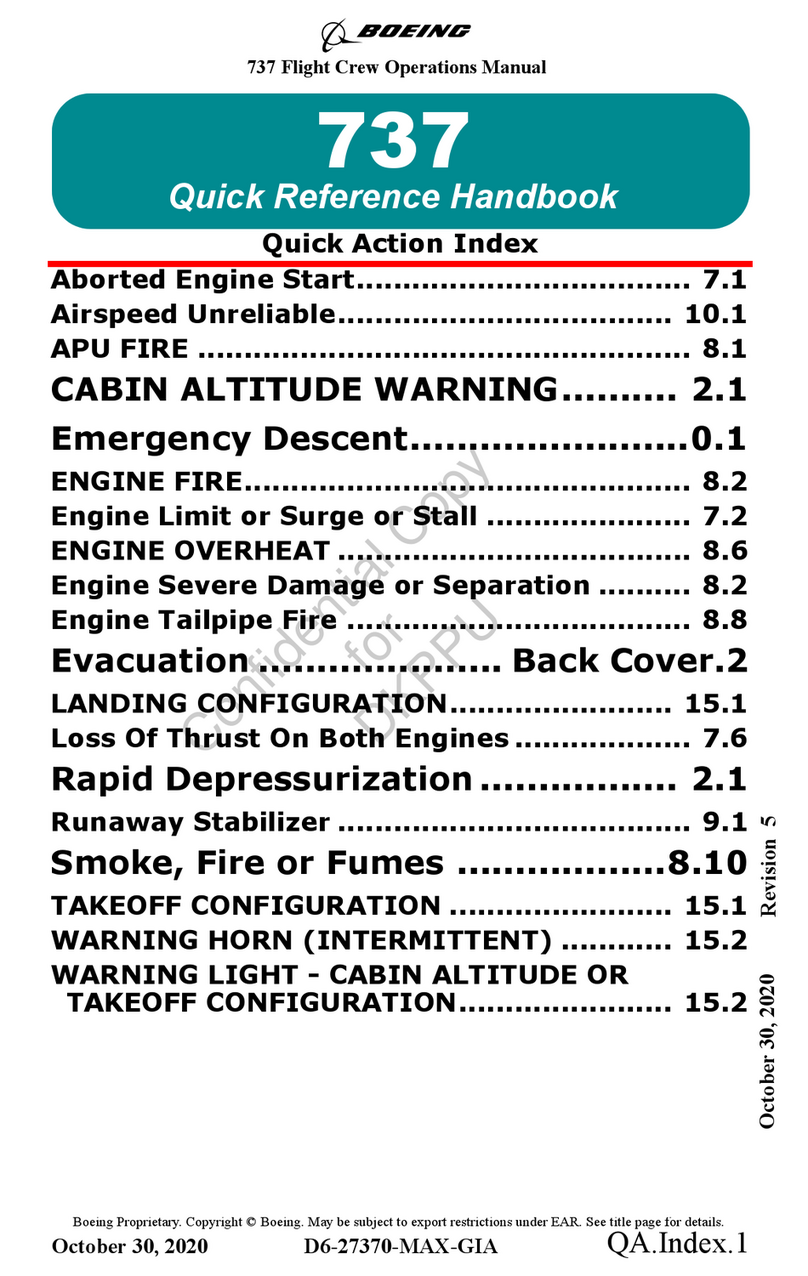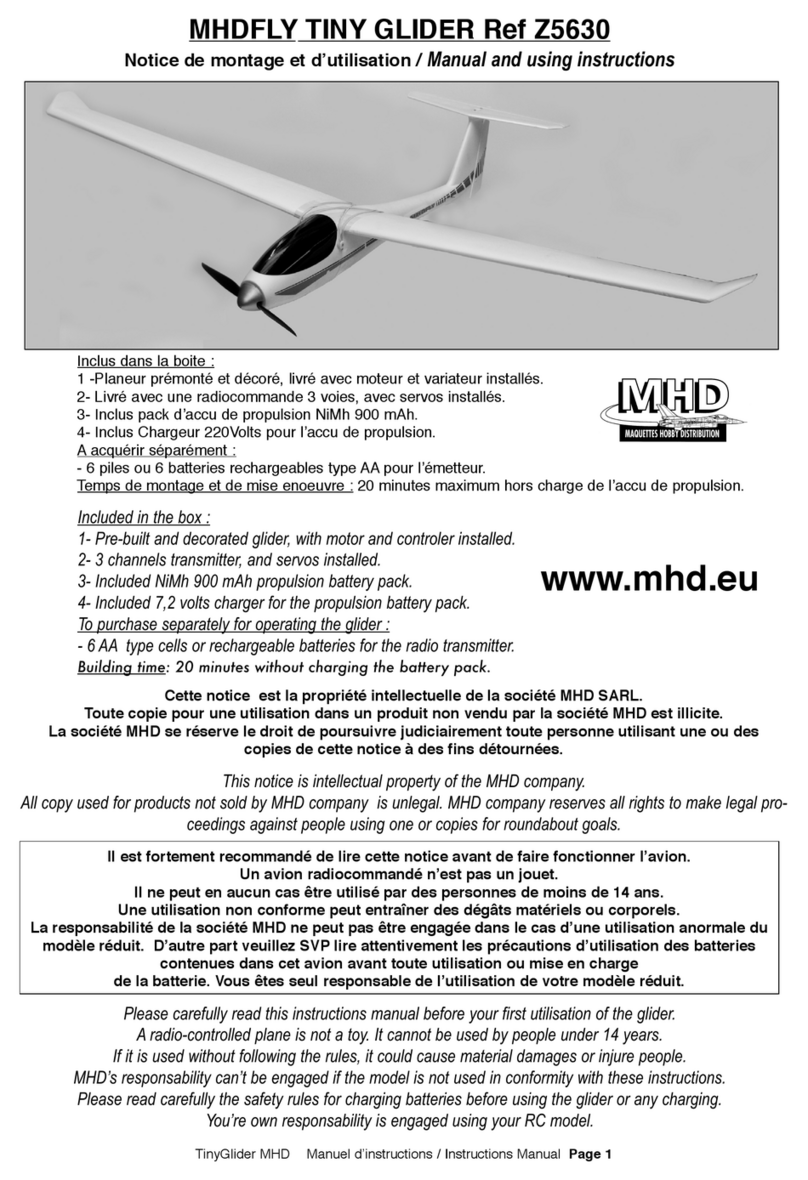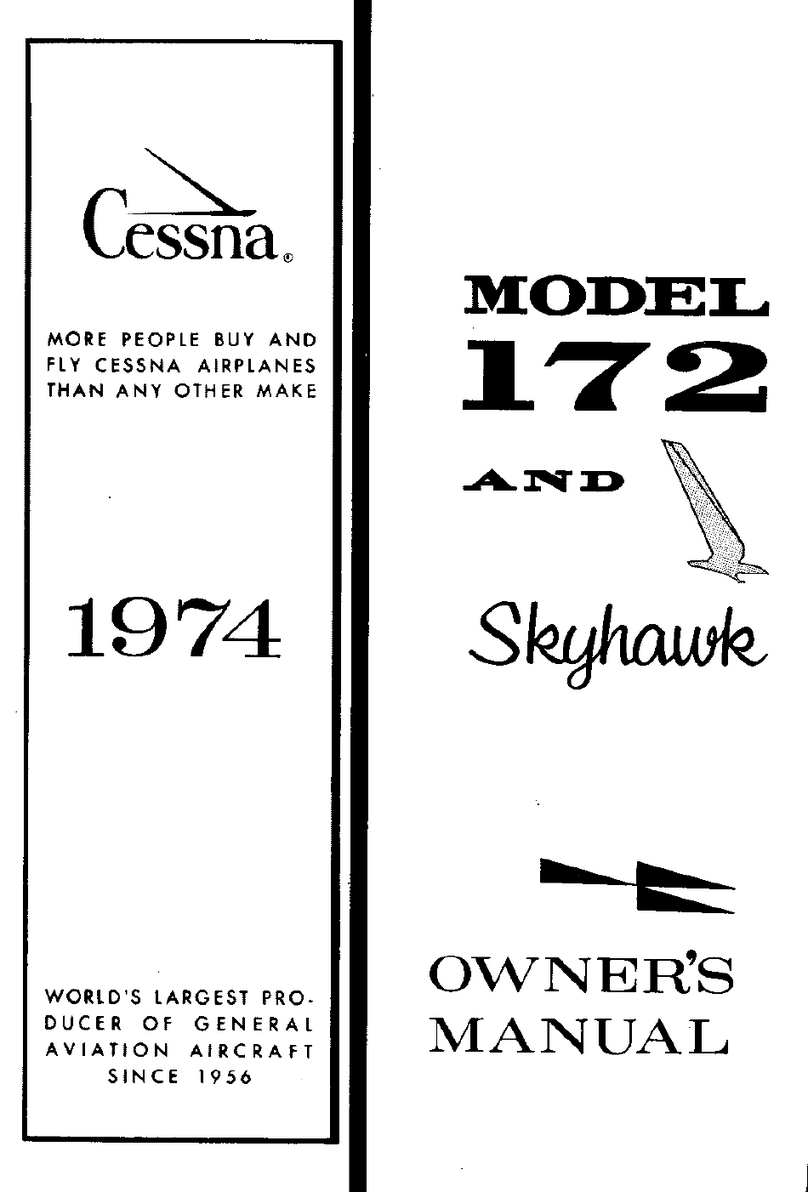Safety advice
All forms of aerial sport involve certain risks.
When compared with other types of aerial
sport, paragliding has the lowest number of
fatal accidents measured according to the
number of licensed pilots.
However, few other sports demand such a
high level of individual responsibility as
paragliding. Prudence and risk-awareness
are basic requirements for the safe practice
of the sport, for the very reason that it is so
easy to learn and practically anyone can do
so. Carelessness and overestimating one’s
own abilities can quickly lead to critical
situations. A reliable assessment of
conditions for flying is particularly important.
Paragliders are not designed to be flown in
turbulent weather. Most serious paraglider
accidents are caused by pilots misjudging
the weather for flying.
Please be aware at all times that any air
sport is potentially dangerous and that, at
the end of the day, you are personally
responsible for your own safety.
We therefore recommend in particular that
you fly in a conservative manner. This
applies both to the choice of conditions in
which you fly and also to the safety
reserve which you factor into your flying
manoeuvres.
Do not under any circumstances use the
paraglider as a parachute. Acrobatics are
not permitted.
We recommend that you only fly with a
glider and harness which have been
tested and certified, and that you wear a
suitable helmet.
In Germany, paragliders are subject to the
guidelines for air sports equipment and must
not under any circumstances be flown
without a valid certification. Independent
experimentation is strictly prohibited. This
Manual does not replace the need to attend
training at a paragliding school.
In Germany, paraglider reserve systems are
not subject to the rating requirements of the
German Civil Aviation Authority
(Luftfahrtbundesamt - LBA).
The paraglider reserve systems in the
ORANGE CROSS series comply with the
airworthiness requirements of the LTF. The
manufacturer is not liable for any injuries or
material damage caused in connection with
this reserve system.
At the time of their dispatch, these reserve
systems comply with the LTF certification
regulations.
Your ORANGE CROSS reserve leads the
way in the development standard for reserve
gliders. It will remain airworthy for many
years if you look after it properly.
Reserve systems may only be packed by
adequately qualified people.
The Manual must be passed on to any new
owner if the rescue chute is sold. It is part of
the certification and belongs with the rescue
chute.
Observe the other specific safety advice in
the various sections of this Manual.
